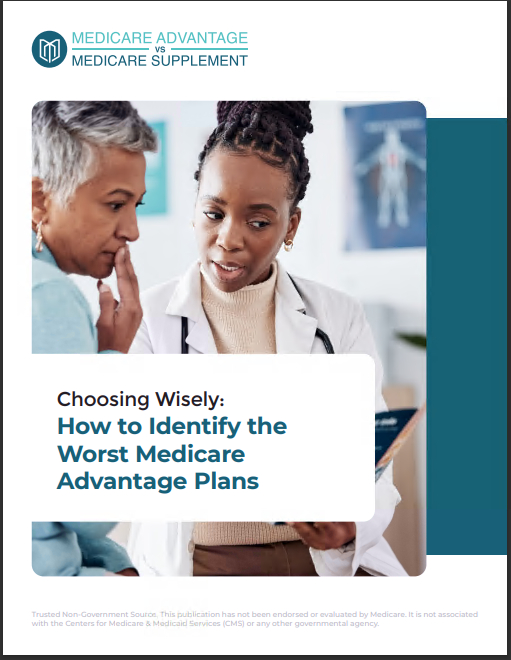Key Takeaways
-
Medicare and Medicaid can work together to cover a wide range of healthcare needs for individuals who qualify for both programs, also known as dual eligible beneficiaries.
-
Understanding how the two programs coordinate benefits can help you minimize out-of-pocket costs and access comprehensive healthcare services.
What Does It Mean to Be Dual Eligible?
Dual eligible individuals qualify for both Medicare and Medicaid. Medicare, as you may know, is the federal health insurance program for people aged 65 and older or those with certain disabilities. Medicaid, on the other hand, is a state and federally funded program that provides health coverage to individuals with limited income and resources. If you qualify for both, you’re considered “dual eligible.”
Being dual eligible means you have access to two separate programs that can complement each other. Medicaid may cover costs Medicare doesn’t, such as long-term care or additional medical expenses. Understanding how these programs interact can make a big difference in the healthcare you receive and the money you save.
How Do Medicare and Medicaid Work Together?
When you’re dual eligible, Medicare is typically your primary payer. This means Medicare pays for covered services first, and Medicaid steps in to cover remaining costs like copayments, coinsurance, and deductibles. Let’s break this down further:
-
Medicare Part A covers inpatient hospital stays, skilled nursing facilities, and some home health care. Medicaid might help pay the Part A deductible.
-
Medicare Part B covers outpatient care, doctor visits, and medical equipment. Medicaid can help with the Part B premium and cost-sharing.
-
Medicare Part D provides prescription drug coverage. Many dual eligible individuals are automatically enrolled in a Part D plan, with Medicaid helping to cover prescription costs.
Medicaid’s role is essentially to act as a safety net, filling in the gaps left by Medicare. This coordination ensures you’re not left paying large medical bills out of pocket.
Who Qualifies for Dual Eligibility?
To be dual eligible, you must meet the qualification criteria for both Medicare and Medicaid. Here’s a quick breakdown:
-
Medicare Eligibility: Generally, you qualify for Medicare if you’re 65 or older, or under 65 with a qualifying disability or condition, such as end-stage renal disease (ESRD).
-
Medicaid Eligibility: Medicaid eligibility varies by state but typically considers income and assets. Some states also have additional programs for aged, blind, or disabled individuals.
Your eligibility can depend on your Modified Adjusted Gross Income (MAGI) and other resources, like savings or property. It’s worth noting that Medicaid’s financial limits tend to be stricter than Medicare’s.
Benefits of Being Dual Eligible
If you’re dual eligible, you may experience significant financial and healthcare benefits, including:
-
Lower Out-of-Pocket Costs: Medicaid can cover Medicare premiums, deductibles, and coinsurance, reducing your overall healthcare expenses.
-
Comprehensive Coverage: Medicaid often covers services Medicare doesn’t, like dental care, vision, and long-term care.
-
Prescription Drug Savings: With Medicaid’s help, you’ll likely pay minimal costs for your medications under Medicare Part D.
-
Access to Additional Services: Depending on your state, Medicaid may offer benefits like transportation to medical appointments, personal care services, or case management.
Types of Dual Eligible Individuals
Not all dual eligible individuals receive the same level of Medicaid assistance. Your benefits depend on your income level and Medicaid category. These categories include:
-
Full-Benefit Dual Eligibles: You receive full Medicaid benefits, which include assistance with Medicare premiums, cost-sharing, and additional healthcare services Medicaid covers.
-
Partial-Benefit Dual Eligibles: You don’t qualify for full Medicaid benefits but receive help with Medicare premiums through Medicaid programs like the Qualified Medicare Beneficiary (QMB) or Specified Low-Income Medicare Beneficiary (SLMB) programs.
Each state has different rules and programs, so it’s essential to check with your local Medicaid office to understand your specific benefits.
Key Coverage Areas to Understand
When Medicare and Medicaid coordinate benefits, it’s important to understand specific coverage areas:
1. Long-Term Care
Medicare typically doesn’t cover long-term care, like nursing home stays beyond 100 days or custodial care. Medicaid, however, can provide extensive long-term care coverage if you qualify.
2. Prescription Drugs
Dual eligible beneficiaries usually receive drug coverage through Medicare Part D. Medicaid steps in to cover prescription costs that Part D doesn’t fully pay for, such as copayments.
3. Dental, Vision, and Hearing Services
While Medicare’s coverage of dental, vision, and hearing is limited, Medicaid often covers these services for dual eligible individuals. Check your state’s Medicaid offerings to know what’s included.
4. Transportation Services
Many Medicaid programs cover non-emergency medical transportation to doctor visits or other medical appointments—something Medicare doesn’t include.
Steps to Enroll as a Dual Eligible Individual
If you think you qualify as dual eligible, here’s how to get started:
-
Apply for Medicaid: Visit your state’s Medicaid office or website to apply. Be prepared to provide income and asset information.
-
Ensure You’re Enrolled in Medicare: If you’re not already enrolled in Medicare, sign up through Social Security when eligible.
-
Coordinate Benefits: Once you’re enrolled in both programs, work with your local Medicaid office to ensure your benefits are coordinated correctly.
-
Choose a Medicare Part D Plan: Many dual eligible individuals are auto-enrolled in a Part D plan. However, you can review options during Medicare Open Enrollment if you want to switch plans.
Common Challenges and How to Overcome Them
Navigating the complexities of dual eligibility can feel overwhelming. Here are some common challenges and tips for managing them:
1. Understanding Benefits
The rules for Medicare and Medicaid are different, and combining the two can be confusing. Reach out to your state’s Medicaid office or a Medicare advisor for clarification.
2. Keeping Up with Changes
Both Medicare and Medicaid rules can change annually. Stay informed by reviewing your Annual Notice of Change (ANOC) and other communications from Medicare or Medicaid.
3. State-Specific Variations
Since Medicaid is state-administered, coverage and benefits can vary widely. Check with your local Medicaid office to understand your specific benefits.
Important Timelines to Remember
-
Medicare Enrollment Periods:
-
Initial Enrollment Period (IEP): Begins three months before you turn 65 and lasts for seven months.
-
Annual Enrollment Period (AEP): Runs from October 15 to December 7 each year, allowing you to make changes to your Medicare coverage.
-
-
Medicaid Redetermination:
-
Many states require Medicaid beneficiaries to renew eligibility annually. Stay on top of renewal deadlines to avoid a lapse in coverage.
-
-
Special Enrollment Periods (SEPs):
-
Dual eligible individuals may qualify for SEPs, allowing you to change Medicare Advantage or Part D plans at any time.
-
What to Watch for in 2025
As of 2025, there are several updates and enhancements to Medicare and Medicaid that may impact dual eligible beneficiaries:
-
Part D Prescription Drug Changes: A $2,000 annual cap on out-of-pocket prescription drug costs is now in place, offering significant financial relief.
-
Expanded Medicaid Services: Some states are increasing Medicaid coverage for services like mental health care and substance use treatment.
-
Enhanced Coordination Programs: Initiatives aimed at better integrating Medicare and Medicaid services are being rolled out to improve care quality and reduce administrative burdens.
Making the Most of Your Dual Eligibility
To maximize your dual eligible benefits, consider these tips:
-
Stay Organized: Keep track of your Medicare and Medicaid ID cards, benefit statements, and important deadlines.
-
Ask Questions: If you’re unsure about your coverage or benefits, don’t hesitate to reach out to Medicare, Medicaid, or a trusted advisor.
-
Use Preventive Services: Take advantage of preventive services covered by Medicare, such as wellness visits, screenings, and vaccinations.
-
Review Plans Annually: Even if you’re auto-enrolled, review your Medicare and Medicaid plans each year to ensure they meet your needs.
Understanding Dual Eligibility Can Simplify Your Healthcare
Navigating Medicare and Medicaid as a dual eligible individual can seem daunting, but understanding how these programs work together can greatly simplify your healthcare experience. By coordinating benefits, you can access comprehensive coverage while minimizing your out-of-pocket expenses. Stay informed, organized, and proactive to make the most of your dual eligible status in 2025.










